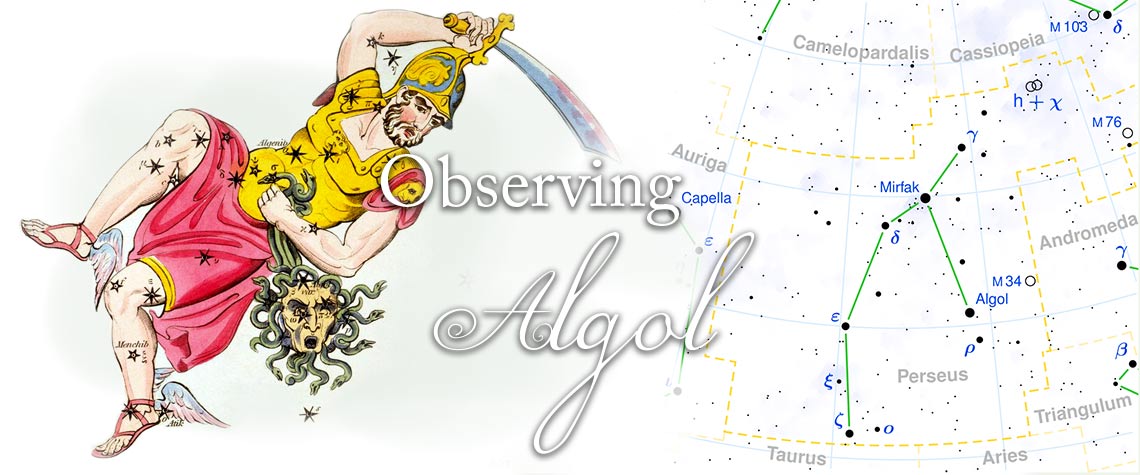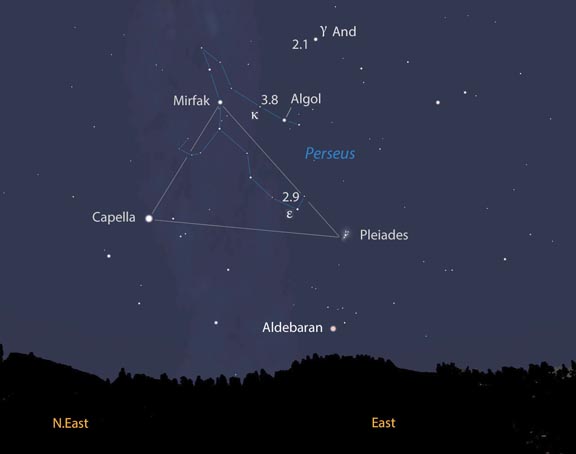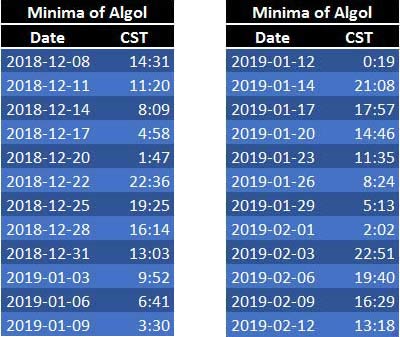Page 4


Observing Algol and Variable Stars
By Mark Spearman, PhD
About a year ago, Randy Light and I were out at my observatory in Wheelock doing some imaging and we walked out to check on the transparency. I looked up and something looked strange. The stars in Perseus seemed different - and dimmer! Then, I thought, “Maybe Algol is undergoing an eclipse!” So, we got on-line and looked for a schedule of the minima of Algol and, sure enough, we were in the middle of an eclipse.
Famous Variable Star
For newbies to astronomy, Algol, or Beta Persei, is a famous variable star that has been known to “wink” for thousands of years with the oldest historical document being an Egyptian calendar that is some 3,200 years old. The name derives from the Arabic, رأس الغول ra's al-ghūl which means, “head of the demon” or “ghoul.” Comic book fans may recognize the name as one of Batman's arch enemies who was also called, “Ra's al Ghul” and is the leader of the “League of Assassins.” Hollywood actor, Liam Neeson, portrayed this bad hombre in the 2005 film, Batman Begins.
Changing Magnitude in Hours
But for us, it is a really cool star. Every 2.87 days Algol goes, in a few hours, from a second magnitude star (similar to the nearby and beautiful double star, Gamma Andromedea) to a 3.4 magnitude star (similar to nearby kappa Persei at 3.8 magnitude). Using the chart below you can find and compare Algol to these and other stars and estimate its brightness during the eclipse. This can be a lot of fun and you will increase your skill in estimating the magnitudes of stars, a skill that is useful for any number of astronomical activities. Don't feel bad if you have never seen it in eclipse; I have been watching the stars for more than 50 years and this was my first time.
Eclipsing Binary Star
The reason for the blinking is that Algol is an eclipsing binary star (actually a triple star system although the third component does not get involved in the eclipse). The website of the American Association of Variable Star Observers (AAVSO) reports, “Algol is an eclipsing binary star system 93 light-years away as determined by the Hipparcos satellite. The main star is a B8 main-sequence star 3 times as large as our sun and the secondary star is a K2-type subgiant. Together they rotate around each other. As seen from Earth, when one star blocks our view of the other star its overall brightness changes. There is a very faint third star in the system. It is an F1 main-sequence star orbiting the inner pair every 1.86 years.”

Source: Sky and Telescope and Stellarium
Christmas Eclipse
The good news is that we have a nice eclipse coming up just before Christmas and on Christmas night itself. Below is a table of the time of the mid-eclipse for the next two months. You can compute your own table by using one of these date/times and adding an integer multiple of 2.867361, the period of Algol in days. This is easy to do in Excel by adding the number to a date-time number. For instance, the date of the Christmas eclipse in Excel is, 43459.8090278 which when formatted as a date-time is 12/25/18 19:25
Finding and Reporting Binary Stars
Finding Algol is fun and seeing it go into and come out of an eclipse is an experience that you share with people who lived 3,000 years ago. But Algol is not the only eclipsing binary and certainly not the only variable star. Tracking variable stars and reporting your observations is something that the American Association of Variable Star Observers is all about. Check out their website here and see how you can contribute to our knowledge of the stars maintained on the AAVSO International Database.

Source: Sky and Telescope and Stellarium